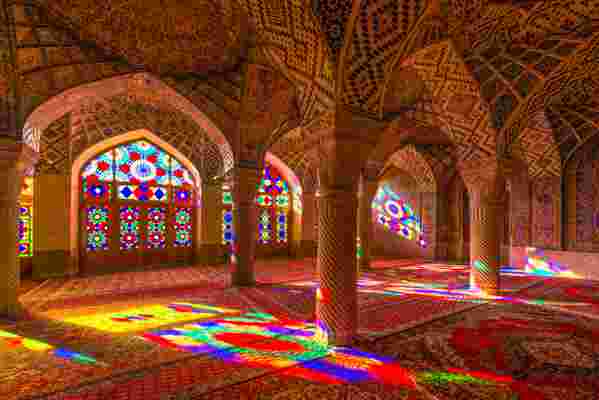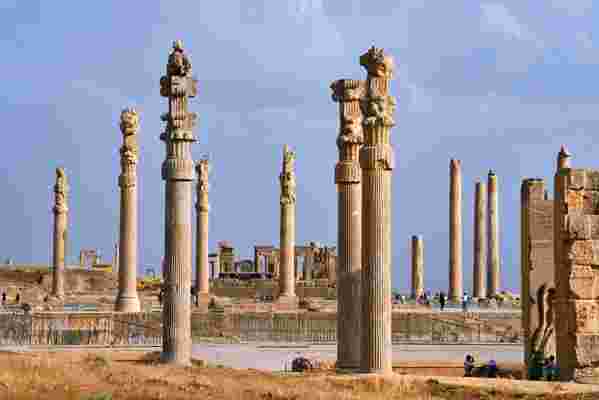Leading Art Institutions Denounce President Trump's Threats to Destroy Iranian Cultural Heritage
In response to the rapidly escalating geopolitical crisis between the United States and Iran, cultural authorities and heritage experts have condemned Donald Trump’s wild-eyed threat to illegally destroy key sites in Iran, which contains some of the first traces of human civilization. Late last week, in a series of alarming tweets, President Trump said the U.S. had identified 52 Iranian targets, some “at a very high level and important to Iran and the Iranian culture,” and warned they would be “hit very fast and hard” if Tehran carried out revenge attacks for last week’s assassination of military general Qassem Soleimani.
Soleimani, considered the second most powerful person in Iran, was killed in a U.S. drone strike in Baghdad on Friday, and, in the longstanding tit-for-tat conflict, Iran threatened “severe revenge” in response. Trump then doubled down on his explosive comments, telling reporters on Air Force One on Monday that Iran couldn’t “kill our people” while “we’re not allowed to touch their cultural sites."
This content can also be viewed on the site it originates from.
This content can also be viewed on the site it originates from.
In a remarkable backlash against the U.S. president, leading figures across the world have said that any attempt to damage Iranian monuments, artifacts, or art would violate international conventions and “constitute a war crime." Political leaders were not the only ones incensed; Trump's remarks also triggered outrage in the art world, with New York's Metropolitan Museum of Art, London’s Victoria & Albert Museum, and the Association of Art Museum Directors—which represents 225 art museums in North America—among those to denounce the threats.

Inside of Nasir al-Mulk, a traditional mosque in Shiraz.
Bold political statements are rare from such prominent arts institutions, who usually shy away from intervening in international relations. But in an extraordinary intervention, a sign of how controversial Trump’s comments have been, the president and director of the Metropolitan Museum of Art, Daniel H. Weiss and Max Hollein, called the deliberate targeting of global cultural heritage sites “abhorrent to the collective values of our society.”
The ultimate resource for design industry professionals, brought to you by the editors of Architectural Digest

“These are invaluable and irreplaceable monuments of history, and a lot of them are not sequestered from the public—they’re so woven into daily life, and provide a way for Iranians to see the past as a living thing," Seema Golestaneh, a professor of Near Eastern studies at Cornell University, who studies the anthropology of Islam and culture of Iran, tells AD . "Other than civilian deaths, there’s nothing that could destroy people’s spirit more than this.”

Ruins of the ancient city of Persepolis, a UNESCO World Heritage Site, which was once the richest city on earth and the capital of the Achaemenid Empire.
Iran contains 22 UNESCO World Heritage sites —landmarks that the U.N. body states should be preserved for their cultural, historic, or scientific significance—including the ancient Persian ruins of Persepolis, the 17th-century Naqsh-e Jahan Square in the city of Isfahan, and the labyrinthine bazaar complex in Tabriz.
Under the 1954 Hague Convention, of which the U.S. is a signatory, targeting cultural sites is a war crime, and the treaty requires “refraining from any act of hostility” directed against cultural property. The U.S. has also signed a 1972 convention to protect the world's natural and cultural heritage. Late Monday evening, the Pentagon moved to distance itself from Trump's comments, with Defense Secretary Mark T. Esper stating at a news briefing that the U.S. would “follow the laws of armed conflict,” including those that prohibit targeting cultural sites.
The Khaju Bridge on the Zayandeh river in Iran.
This content can also be viewed on the site it originates from.
Nancy Wilkie, president of the U.S. Committee of the Blue Shield, an organization dedicated to the prevention of destruction and theft of cultural heritage, adds: “Iran has a long, continuous range of cultural heritage, ranging from the very earliest sites of humanity, the origins of agriculture, all the way through to Islamic sites.” When asked how Trump’s threats differ from ISIS’s destruction of monuments in Syria, Wilkie, the former president of the Archaeological Institute of America, tells AD : “I don’t see much difference at all, frankly; they have the same goal in demoralizing the target population.”
The World Monuments Fund, a New York–based nonprofit organization, said in a statement: “From Syria to Afghanistan, Mali to Yemen, we have all witnessed far too many intentional acts of destruction of irreplaceable treasures over the last decades. In each case we have seen how the obliteration of such important places of meaning irrevocably harms not only a country’s people, but humanity in general.”